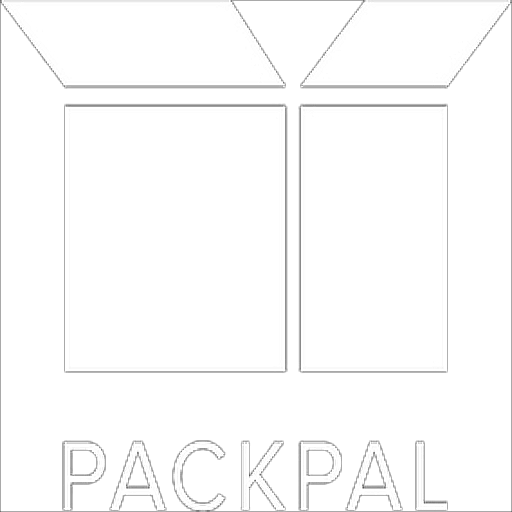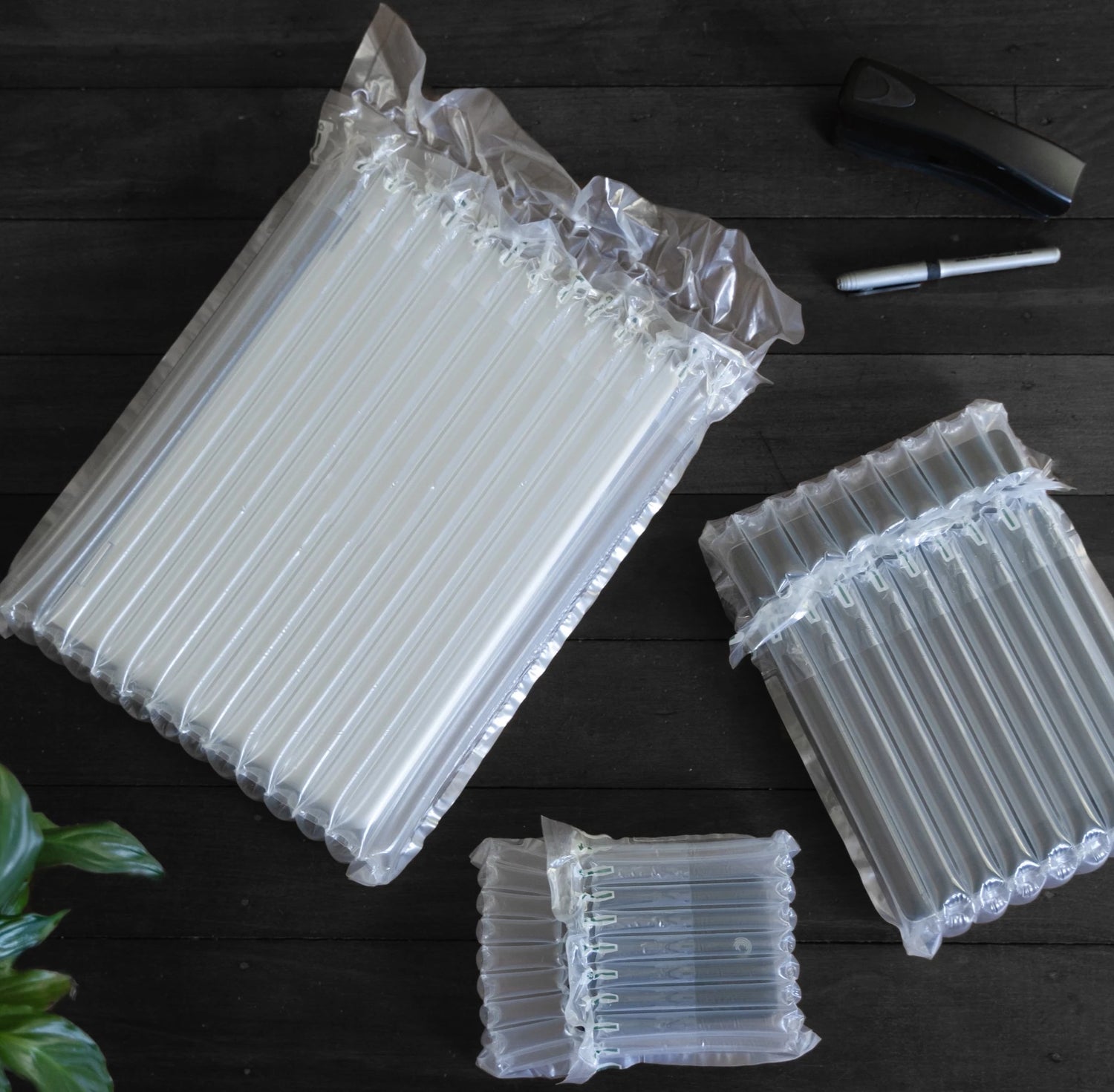In the fast-paced world of shipping and handling, ensuring the safety of your goods during transit is paramount. Packaging foam, with its ability to provide a cushioning barrier against shocks and vibrations, plays a crucial role in safeguarding delicate items. As businesses and individuals seek the best solutions to protect their shipments, it becomes imperative to understand the diverse landscape of packaging foam types available in the market.
From traditional options like polystyrene and polyethylene foams to innovative alternatives such as biodegradable foams, this comprehensive guide will explore the vast array of packaging foam options, shedding light on their unique characteristics and applications.
Additionally, we'll highlight the rising star in the packaging arena – the "Air column" packaging, which emerges as a sustainable and efficient alternative to traditional foam materials. Join us on this journey through the ultimate list of packaging foam types.
What is Packaging Foam and Why Do We Need It?
Packaging foam is a specialized material designed to provide protection and cushioning to items during transportation, handling, and storage. It comes in various forms, each tailored to specific packaging requirements, and is an essential component of the shipping and logistics industry. The primary purpose of packaging foam is to prevent damage caused by impact, vibration, and compression, safeguarding the integrity of the packaged goods.
Common Packaging Foam Types
1. Expanded Polyethylene (EPE)
Expanded Polyethylene (EPE) is Also known as beaded foam. It is a thermoplastic resin melted and cooled before being molded into the desired shape. This lightweight and durable foam offers excellent cushioning and shock absorption, along with a high weight-to-strength ratio and thermal resistance.
It is also resistant to water, oils, and chemicals, and is a non-abrasive packaging foam material suitable for protecting delicate items with class-A surfaces. Its versatility makes it ideal for a range of applications, providing reliable protection during transit.
2. Polyurethane (PU)
Polyurethane (PU) is recognized widely for its use in cushioning and mattresses and also proves to be an excellent packaging material. This elastic open-cell foam is highly flexible and soft, making it ideal for protecting delicate items sensitive to vibrations during transit.
PU absorbs shocks effectively, retains its shape, and is often converted into "egg crate" shapes to line protective cases and boxes. With resistance to mildew, PU is suitable for packaging food and other moisture-sensitive products.
3. Expanded Polypropylene (EPP)
Expanded Polypropylene (EPP) is a closed-cell beaded foam renowned for its excellent protection capabilities. This foam acts as an exceptional shock absorber, boasting a high strength-to-weight ratio and impact resistance.
With good thermal insulation and resistance to water and chemicals, EPP can be fabricated in various densities to meet specific needs. Widely used in automotive and packaging applications, EPP serves as reliable protective dunnage, ensuring the safe transport of products in diverse industries.
4. Polyethylene (PE)
Polyethylene is a closed-cell foam that stands out for its density, making it suitable for protective packaging of larger and bulkier items. Compared to polyurethane, PE is non-absorbent, providing effective protection against water, chemicals, and other liquids.
Resistant to mold, rot, and mildew, PE is ideal for applications requiring vibration dampening, insulation, ESD, and anti-static protection. It is available in extruded planks and laminated sheets, offering a wide range of thicknesses, densities, and colors.
5. Expanded Polystyrene (EPS)
Expanded Polystyrene (EPS) is very lightweight and rigid, and a closed-cell foam known for its excellent insulating properties, making it one of the best insulators in protective packaging materials. Cost-effective and energy-efficient, EPS is often used for blocking and bracing, and it can be molded to fit specific shapes.
While brittle and prone to cracking, EPS remains a popular choice, especially when molded in high quantities, due to its affordability and insulating capabilities.
6. Cross-Linked Polyethylene (XLPE)
Cross-linked polyethylene foam is a high-density, closed-cell foam characterized by its compact feel and resistance to water and chemicals. The cross-linking process strengthens the chemical bonds between polymer molecules, resulting in a foam with properties similar to regular polyethylene but enhanced.
XLPE is often chosen for protecting class "A" surfaces due to its non-abrasive nature. Commonly used in medical packaging, XLPE maintains a high-end look and feel, making it suitable for presentation kits.
7. Charcoal Foam
Charcoal foam is a clean and durable material that is resistant to dirt. With an open-pore structure, it is often used as a filter, particularly in applications such as aquariums. Its tough-to-dirty characteristic makes it suitable for environments where cleanliness is crucial. Charcoal foam serves as an effective filter for various purposes, ensuring a reliable and long-lasting performance.
8. Anti-Static Foam
Anti-static foam is chemically treated to possess anti-static properties, protecting items from electrostatic discharge (ESD) during transport. Recognizable by its distinctive pink color, this foam not only shields electronic devices and circuit boards but also prevents static shock to employees handling the products. Anti-static foam is crucial for sensitive electronic components, ensuring their integrity during shipping and handling.
9. Crosslinked Foam
Crosslinked foam, a type of PE foam, offers similar qualities to regular PE foam but with enhanced density and water resistance. This compact foam is suitable for protecting class-A products and is commonly used in applications where durability and water resistance are essential.
Its buoyancy, moisture resistance, and thermal insulation make it an excellent choice for transporting sensitive or delicate products, such as medical or military equipment.
Various Packaging Foam Styles
In addition to types based on foam packaging materials, Packaging foams come in various styles. These styles can be from foam custom foam inserts or packaging foam inserts to sheets, some of these are as follows:
- Foam Wrap Rolls: Foam wrap rolls are continuous sheets of foam conveniently wound into rolls.
- Foam Sheet: Unlike foam wrap rolls, foam sheets come pre-cut and ready for use, eliminating the need for manual cutting or tearing.
- Crumbed foam: It is the small chips of used foam, that can be used for many purposes.
- Foam Pouch: Foam pouches, also known as foam bags, are lightweight solutions that transform into protective bags for fragile items during house moves or shipping.
- Foam Tubing: Foam tubing is cylindrical foam packaging for items with longer dimensions that cannot be covered by traditional foam wraps.
- Foam Blocks: Rigid chunks of foam known as foam blocks, serve to protect items during transit.
- Foam Liners: Foam liners, often referred to as Egg Crate Foam, feature pre-formed contours resembling an egg-box design.
- Pick and Pull Grid: The pick and pull grid is a versatile foam packaging solution designed for creating extra security and accommodating various shapes and sizes for specialized items.
Introducing Air Column Packaging: A Revolutionary Alternative to Traditional Foam
In the ever-evolving landscape of packaging solutions, innovation has given rise to alternatives that challenge traditional norms. Among these groundbreaking options, Air Column Packaging emerges as a revolutionary alternative to conventional foam materials.
While traditional foams like Expanded Polyethylene (EPE), Polyurethane (PU), and Expanded Polystyrene (EPS) have long been the stalwarts in the packaging industry, the advent of Air Column Packaging brings a new dimension to the art of protecting shipped goods.
The Air Column packaging or Bag, also known as inflatable air packaging, air shock packaging, or air-filled bags for packaging, represents a new paradigm in protective packaging. What sets it apart is its ingenious design filled with natural air. Before inflation, these bags lay flat, saving space and costs. Once inflated, they transform into a robust, three-dimensional protective barrier for your products.
Shapes and Customization
Businesses can choose from three different shapes of The Air Column packaging—Q-shaped, L-shaped, and U-shaped. This variety ensures that products of diverse shapes and sizes receive tailored protection. Customization is a key feature, allowing businesses to have custom shapes of The Air Column packagings perfectly suited to their specific products.
Custom Applications
The main material of these packagings is LDPE+15%PA (PA=Nylon), ensuring moisture-proof and waterproof properties. Businesses can have their air column bags tailored to the shape and size of their products, guaranteeing 100% protection during transportation.
Features
- 360-Degree Product Protection: Air column packaging bags provide comprehensive protection from all angles, minimizing damage rates during transportation.
- Shockproof and Weight-Bearing: The air column packaging bag can bear a weight of about 60-100KG after inflation, ensuring a robust shockproof effect.
- Automatic Locking and Redundancy: Designed with multiple air columns, even if one breaks, the others continue to provide protection, reducing the risk of product breakage.
- On-Demand Inflation: Air column bags can be inflated as needed, offering flexibility in storage and convenience in handling.
- Efficiency Boost: Roll-packed air tube bags can be automatically inflated with an air cushion machine, significantly improving packaging efficiency.
Applications
Air column bags are a high-cost effective choice for various industries, including small factories, warehouses, e-commerce, stores, express logistics, and more. They are particularly beneficial for fragile products, electronics, glass items, wine bottles, ceramics, cosmetics, and a range of other products requiring reliable and space-efficient protection during transit.
Conclusion
The world of packaging foam offers a diverse array of solutions, each tailored to specific needs and challenges in the realm of shipping and handling. From traditional stalwarts like Expanded Polyethylene (EPE) and Polyurethane (PU) to innovative alternatives like Air Column Packaging, businesses and individuals have a plethora of options to choose from. The comprehensive guide provided sheds light on the unique characteristics and applications of various packaging foam types, emphasizing the crucial role they play in safeguarding delicate items during transit.
FAQs
What are the key benefits of using Air Column Packaging over traditional foam materials?
Air Column Packaging offers several advantages, including 360-degree product protection, space-saving design before inflation, shockproof and weight-bearing capabilities, automatic locking with redundancy, and on-demand inflation. Its customizable nature and efficiency boost make it a game-changer in the packaging industry.
How does Expanded Polyethylene (EPE) foam differ from other packaging foam types?
EPE is a lightweight and durable foam known for its excellent cushioning and shock absorption. Unlike some foams, it is resistant to water, oils, and chemicals, making it versatile for various applications.
Why is packaging foam crucial for businesses and individuals in the shipping and logistics industry?
Packaging foam serves as a specialized material designed to provide protection and cushioning during the transportation of retail products, handling, and storage. It class a surface protection and its primary purpose is to prevent damage caused by impact, vibration, and compression, safeguarding the integrity of packaged goods.

